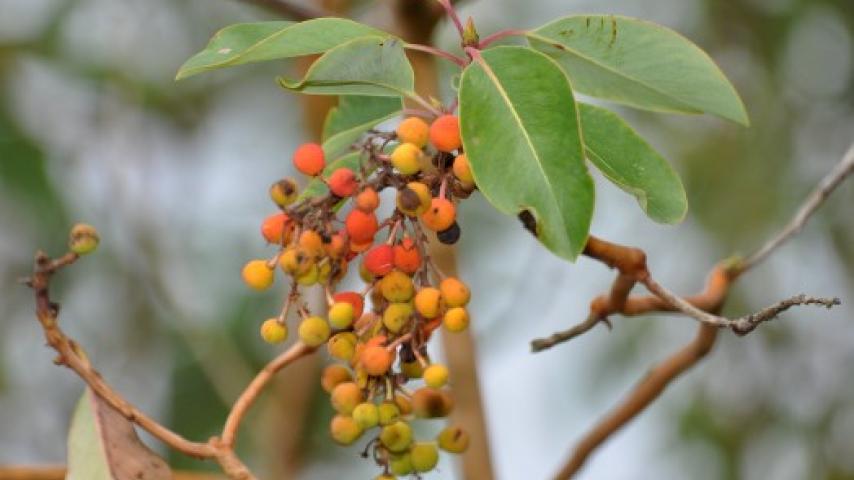Pacific Madrone (Arbutus menziesii)
With their red-orange, satiny smooth trunks, big bright green evergreen leaves, and clusters of red berries, madrones are among the most beautiful and easily recognized trees of the Pacific Northwest.

KINGDOM Plantae - PHYLUM Anthophyta - CLASS Eudicotyledonae - ORDER Ericales - FAMILY Ericaceae
They are called Arbutus in their restricted range in southwestern Canada, and from there they occur south all along the Pacific coast to northern Baja California. They tend to be in climatically drier areas in this wet-forest zone, often on rocky hillsides or in areas of coarse, well-drained soils. They are shade-intolerant so often grow on the edges of forests. They are quite common overlooking salt water in many areas.
Not especially large in most areas, Pacific Madrones can nevertheless reach 30 m in height, with a trunk over 2 m in diameter. The young bark is pale greenish, turning red-brown as the tree grows and eventually peeling off in big clumps. The smooth, leathery leaves are oval, up to 15 cm in length, shiny dark green above and paler below. They are attacked by both insects and fungi and are often discolored and spotted, but this damage is cosmetic and does not affect the overall fitness of the tree.
The flowers are urn-shaped, typical of the heather family, and white, about 6 mm long. In large drooping clusters, they are quite fragrant. The 1-cm granular orange-red berries are dispersed by birds and not particularly eatable by humans and other mammals. They are very popular with birds in fall, especially Band-tailed Pigeons.
In recent years, many madrones have died. They are apparently easily infected with fungal diseases, and root-rot and canker fungi are implicated in this rather obvious mortality. The root-rot fungus is related to the one that caused the potato famine in Ireland during the last century. Cankers cause big scars on the bark and may effectively girdle the tree. Madrones are apparently quite sensitive to environmental perturbations, and the stresses caused by changes in soil compaction, drainage, drought and changing climate make the trees more susceptible to pathogens.
Madrone wood is hard and brittle and not much used by humans. The berries are inedible to humans, and the tree is quite difficult to transplant, although it is carried by some nurseries. Nevertheless, it remains an icon of Northwest coastal forests and is a welcome sight where it persists in urban and suburban areas.